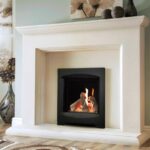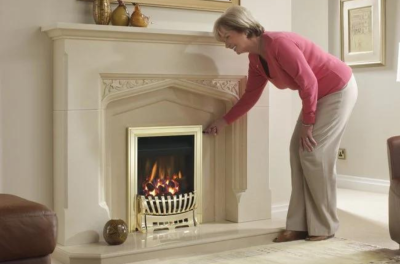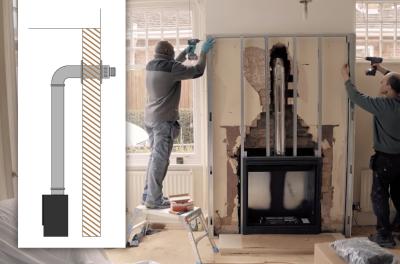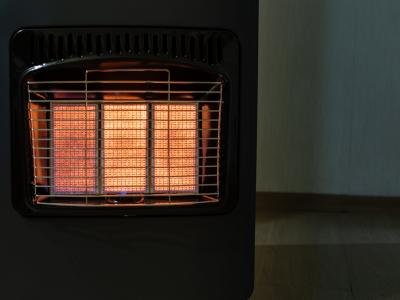We use cookies to improve your experience and our business. See our privacy/cookie policy or continue browsing to accept our use of cookies. View our cookie policy.
Which Type of Fireplace Should You Buy - Wood vs Electric vs Gas
Solid Fuel vs Electric vs Gas Fireplaces
Is there anything better than a roaring fire on a cold, dark night? Since the dawn of time, people have huddled around the warming glow of crackling flames - and the appeal has been undiminished by the advent of central heating.
A recent study by Christopher Dana Lynn, an anthropologist at the University of Alabama, even found measurable decreases in the blood pressure of people relaxing by a fire, suggesting that the biological effects run even deeper than you might imagine.
But if you decide to install a fireplace in your living room, how do you decide which one to go with? From wood burning and solid fuel to electric and gas fireplaces, the best type of fireplace for you will depend on a variety of factors.
Here are the pros and cons of each type...
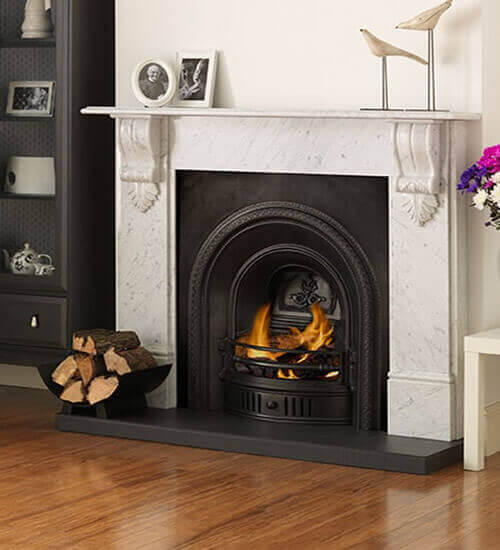
Wood Burning and Solid Fuel Fires
Pros
The main benefit of a wood burning or solid fuel fire is clear – if you want the ‘real’ thing, with the gentle crackle of flames, that ‘real’ smell and the ability to roast marshmallows, then these are the fires for you
They’re also a great option if you want to add a traditional feel to your living room. From classic marble fire surrounds, with their timeless solidity, to ever-popular Victorian and period fireplaces, with their decorative detailing, along with a rustic fire basket, a wood burning fireplace can add real atmosphere to your space.
Although forestry processes do involve some carbon emissions, on balance, wood fuels generally have lower lifecycle carbon emissions than natural gas.
Cons
Wood burning stoves and solid fuel fires are higher maintenance than their electric and gas counterparts, requiring a certain amount of knowledge to get going, regular maintenance and inspections to ensure that they are safe. However, once you become used to the routine of a ‘real’ fire, the process should be relatively simple.
They’re also not as heat efficient as some designs – although burning hard woods such as oak and maple will create more heat than soft woods. However, homeowners who choose this type of fire are happy to put up with the slight hassle, in return for the atmosphere and cosiness that the real thing provides.
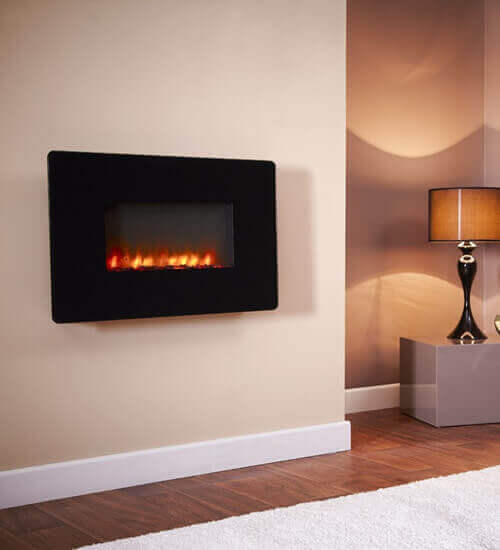
Electric Fires
Pros
An electric fire gives you the effect of a real fire at the flick of a switch. Essentially, they are just an electric heater that imitates the look of flames, making them relatively easy to relocate. This is ideal if you decide that you’d like a fire in a completely different room to your chimney, or if you move your furniture and want to move your fireplace accordingly.
This type of fire also gives you a lot of flexibility in terms of style, particularly if you’re interested in contemporary electric fireplaces. From wall-mounted designs to sleek silver insets, such as our Dimplex X1 Silver Inset Electric Fire, there are lots of designs to choose from if you want something a little different.
Electric fires also don’t use any combustible fuel, and so don’t emit any harmful gases such as carbon dioxide or carbon monoxide. However, all forms of electricity generation will, of course, have some negative impact on the environment.
Cons
The flames of electric fires are slightly less realistic than those of gas and, of course, much less realistic than those of the real thing. They are also typically more expensive to operate than gas fires.
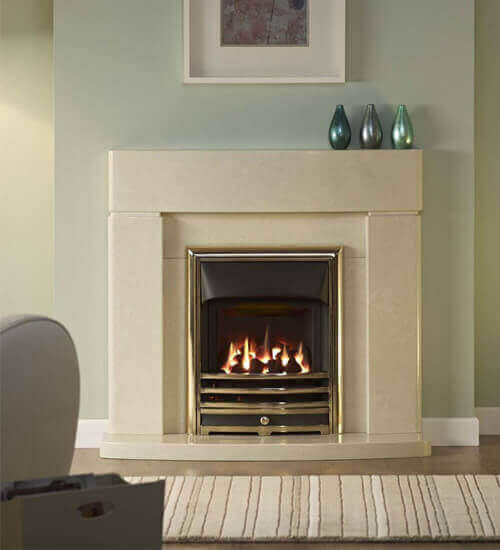
Gas Fires
Pros
Gas fires have many of the benefits of electric fires, in that they are comparatively easy to light and maintain, and offer flexibility in terms of location. Due to their reliance on gas, they will operate during a power cut, unlike electric fires
As with electric fires, they also offer a huge range of different styles, including contemporary wall mounted fireplaces, as well as more traditional designs. As mentioned above, they are also slightly cheaper to run than electric fires.
Cons
Gas fires don’t offer the realism of wood burning or solid fuel fires – although they are slightly more realistic than electric fires.
If you don’t have a gas line running into your house, you will also have to use LPG gas, which will need to be stored outside your property. If you’re looking to add the timeless quality of a fire to your home, the best fire for you will depend on the look you want to achieve, as well as a variety of other factors.
Best Fireplace To Buy Summary
Fuel Type
- Gas Fires: These fireplaces obviously burn gas fuel that is pulled into the fire from a gas line. They are easy to clean and use.
- Electric Fires: Electric fireplaces use electricity to great the fire and produce heat.
- Solid Fuel / Wood Fires: Solid fuel fires have been the most common type of fireplace fuel throughout history.
Air Circulation Type
Another way to classify fireplaces is by the way that they circulate air. Generally, there are two major categories for this distinction:
- Vent Free: Vent free fireplaces do not have a direct venting feature and do not require the opening of the chimney to vent the fire. Often the air is circulated through another area and these a big positive of vent free fireplaces is that they are fuel efficient.
- Direct Vent: A direct vent fireplace vents the air in the fireplace and out of the chimney.
Here at Direct Fireplaces we stock a high-quality range of fire surrounds, gas fires and electric fires. Browse today to find the perfect fireplace for you.
[related_products is_auto_added="1"]direct fireplaces
Latest posts by direct fireplaces (see all)
- Which Electric Fireplace Gives the Most Heat? - February 5, 2021
- Retro Fires and Retro Stoves for the Home - January 22, 2021
- Do I Need a Fireplace in My New Home? - January 20, 2021


